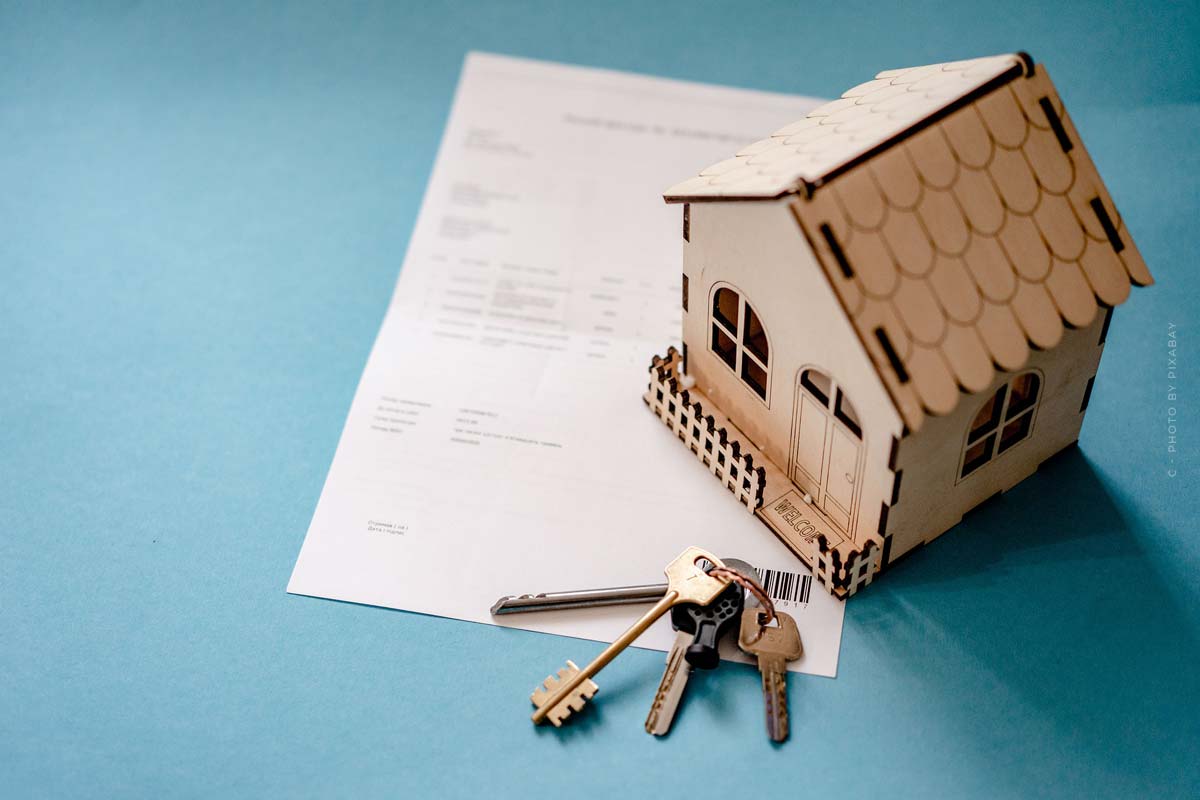Financing of house & apartment: loan, credit & Co. – types, advantages and disadvantages
Financing of house & dwelling – an own house or an own dwelling is the dream of millions of humans, but how one finds the correct real estate financing? It is clear that there are many different types of financing with which one can fulfill the dream of owning a home. The most popular form of financing is the annuity loan. The loan is intended primarily for long-term financing, which is concluded with a variable or a fixed interest rate. It is important to deal with the issue sufficiently, because home financing usually extends over several years. Therefore, mistakes in construction financing represent a particularly high risk. These mistakes can not only bring the home in great danger, but accompanies one over several years. In our article, you will learn everything about the different forms of financing, for whom they are suitable and, above all, what advantages and disadvantages they bring.
Why finance?
Acquiring a property is an important decision, whether as a capital investment, a home of one’s own or as a private provision. With the different types of financing it is possible for everyone to make his first home or his first capital investment possible. Before you enter into a financing you should deal with some points before. You should check your equity, consider the incidental acquisition costs, calculate interest and repayment, housing allowance and reserves, and calculate your monthly burden.
Own home or real estate as an investment
Buying your first own apartment or house is a purely emotional decision, whereas in the case of real estate as a capital investment, it is purely a matter of the economic aspect and therefore an emotionless decision must be made. In both cases, however, it is important to deal with a checklist and the ancillary purchase costs in order to avoid serious mistakes.
Buy first apartment
Buying your first own apartment is a great experience in life. To ensure that nothing goes wrong when buying your first apartment, it’s best to have a checklist at hand!
Purchase price + ancillary purchase costs / credit rating (rule of thumb: how much is left over in the month?)
Buying an apartment or house always involves additional costs! To be able to cover these, you should think in advance about how high the maximum purchase price may be and how much money is available per month.
Types of financing
If a property is purchased, the purchase price is usually paid off with the help of real estate financing. For this purpose, the buyer can choose from various types of real estate financing. From annuity loans, partition loans, full financing, construction financing to many other types of financing.
But what does financing actually mean? It is a measure for the procurement and repayment of capital. But some forms of financing require security in the event of default, which must then be recorded as a mortgage or land charge in the land register.
Annuity loan: Probably the best-known form of financing
An annuity loan is a typical form of real estate financing. The fixed installments must be paid regularly and consist of an interest and repayment portion. The special feature of the loan is that the amount of the installment remains the same throughout the entire term, but the ratio of interest and repayment changes nevertheless. With each payment, the loan debt decreases and the interest portion thus decreases, but the repayment portion increases.
Who is this type of financing suitable for? For security-conscious investors who want to count on fixed rates over the fixed interest period.
The most important in a nutshell:
- Fixed rates
- Composition of interest & repayment portion
- Steady rate
- Change of the interest & redemption ratio
Advantages and disadvantages of the annuity loan
Probably the greatest advantage of this typical form of financing is the constant installment, which allows a fixed monthly budget to be planned precisely. It is also often possible to make unscheduled repayments at certain times and thus repay the loan more quickly. One of the disadvantages, however, is a long fixed interest rate, which means that you are tied to monthly installments for a longer period of time. If your personal situation changes and you want to repay earlier, you will have to pay a high full repayment penalty for the early repayment. After expiration of the debit interest rate commitment, follow-up financing is usually required; the interest rates are based on the current market investment, which can be either positive or negative.
Advantages:
- High planning reliability
- Fast redemption
- Decreasing interest burden
- Accurate calculation of follow-up financing
- Residual debt fixed from the beginning
Disadvantages:
- No change of contract possible
- Agreement of unscheduled repayments for flexibility
- Credit institutions do not always accept unscheduled repayments
- Borrower must assume full repayment penalty
Reverse mortgage: mortgaging the owner-occupied home
There are different forms of financing to finance the dream of owning a house or apartment. The reverse mortgage is one type of many financing options. It is a loan that is paid out by an insurance company, bank or private individual. The basic idea behind it is that property owners borrow against their home and in return receive a loan with a fixed term from a bank, insurance company or private individual. The loan amount is then transferred as a monthly annuity or a one-off payment. A real win-win situation: owners can stay in their home and even supplement their pension at the same time.
Who is the reverse mortgage suitable for? This form of financing is particularly worthwhile for older people who are already retired and no longer want to leave their home, but still want to supplement their pension.
- Disbursement of a loan by insurance company, bank or private person
- Mortgaging of the home
- In return receipt of a loan with a fixed term
- Paid out as a monthly pension or a one-time payment
Advantages and disadvantages reverse mortgage
Do you have little or no equity capital available for buying a house? Then the reverse mortgage is exactly the right form of financing for you. It is especially suitable for retirees who have paid off their property with savings and income all their lives. A special advantage is that owners can live in the property until the end of their life and receive money for their property during that time. The pension can thus be supplemented. Thus a high planning security is created, since the height of the annuity, interest rate and running time are specified in advance. Clear disadvantages of this form of financing are fees and the interest rate of the loan. There may also be closing fees if the average age is exceeded and the inheritance is significantly reduced.
Advantages:
- Lifetime right of residence
- Pension is improved
- No interest or redemption payment
- Heirs can redeem real estate
Disadvantages:
- High fee costs
- Low payout amounts
- Elimination of inheritance
- Maintenance of the property
Here you will see the verification of the equity and monthly income, in order to then be able to set up a type of financing:

Repayment loan: Decreasing installment burden during the term
An amortizing loan is a particular form of financing characterized by a decreasing installment burden over the term of the loan. The interest portion decreases from installment to installment, so that it constantly decreases and becomes more and more similar to the repayment amount. Wondering if the amortizing loan is right for you?
If you want to pay off your loan quickly and efficiently, then this form of financing is suitable for you. However, you should have a regular and solid income so that the high installments can be paid at the beginning.
- Decreasing rate burden over the term
- Constant reduction
- Fast & efficient redemption
- Regular, solid income should be available
Advantages and disadvantages of the amortizing loan
The amortizing loan brings with it advantages and disadvantages that should definitely be weighed up against each other before concluding a financing deal. A significant advantage is that the borrower pays off a fixed amount per month, thus reducing the residual debt. However, the fact that the residual debt remains relatively high at the beginning and only decreases sharply at the end of the term is a clear disadvantage.
Advantages:
- Faster reduction of residual debt & interest amounts
- Free capital can be used
- Landlord may use proceeds from rent for increased repayment of principal
- Low total cost of credit
Disadvantage:
- Residual debt high at the beginning
- Additional costs for early reduction of residual debt
- Loan form rarely accessible to private individuals
- Longer term in most cases
Building savings contract: Combination of loan & savings
Very simple! This is a combination of real estate loan and usual savings. First, it is determined how much should be saved per month, which then results in the building savings amount. The contract is divided into several phases. In the first phase, the saver pays in a fixed amount each month. He then receives interest on this amount.
The second phase begins when a certain amount has been saved, for example 35 percent of the total amount. Then comes the allocation. You receive the right to a building loan at a lower interest rate for the remaining amount. The building savings contract is suitable for people who want to finance their dream of owning their own property as cheaply as possible. However, this financing option is not intended for short-term financing goals.
- Combi of loan and savings
- Different phases
- Monthly fixed amount with interest
- Allocation starts from a saved amount
- Right to soft loan
- Long term financing
Advantages and disadvantages of a building savings contract
A building savings contract has advantages and disadvantages. You can read more about this type of financing here.
Advantages:
- High security
- Capital guarantee
- Profit through government subsidies
- Intended use flexible
Disadvantages:
- Interest on credit balances lower in the initial phase
- High processing fees
- Monthly charge higher than other financing
Full financing: With little capital to own a home
There is little or no capital available for a real estate purchase? There is no opportunity to save money or you have just started to do so? This is exactly when full financing comes into play. The credit institution then takes over the missing equity capital and finances if necessary also the building additional costs. But then you have to keep in mind that the interest rates are higher.
- Little to no capital available
- Credit institution assumes equity
- Financing of ancillary construction costs
- High interest
Advantages and disadvantages of full financing
A property can be financed also quite simply without own capital funds, that can bring advantages, but also disadvantages with itself. First of all, short waiting periods are guaranteed, because you do not have to save until a certain point in time, the dream of owning your own home can be fulfilled directly. In addition, it is always good to finance as early as possible, so that one is free of costs before retirement age. Another advantage is that possible savings can be used for repairs or new furniture. But what are the disadvantages? There is a risk that the repayment can cause problems due to possible changes. This can be, for example, unforeseen unemployment or even incorrect calculation. Another point is high interest rates.
- No long waiting time
- Earlier repayment of the loan
- Equity subject to change
Disadvantages:
- Higher interest rates
- Longer redemption period
- Unforeseen life changes
A number of staff review the current market rate and adjust it to current loans:

Variable loans: Flexibility through variable interest rates
This is a type of financing that is particularly suitable for short-term real estate financing. The good thing about this form of financing is that you do not have to pay fixed debit interest, because the interest rate is always adjusted to the current market interest rates. The interest rates are always based on the Euribor money market rate. But what do you mean by Euribor interest rate? Very simple. It is a key interest rate of the European Central Bank. The interest rates are adjusted every three to six months to the interest rates of the variable loan.
But for whom is this form of financing actually suitable? Clearly for buyers with a willingness to take risks. Likewise for buyers and builders for whom financial security is guaranteed.
- Short-term real estate financing
- No fixed debit interest
- Adjustment to current market interest rate
- Interest is adjusted to the loan every 3 – 6 months
Advantages and disadvantages variable loan
Are you interested in a variable loan? Then you should definitely weigh up the pros and cons beforehand. It is clear that this is a high-risk loan. An unexpected rise in interest rates not only leads to higher costs, but also increases the loan rate. However, the loan also comes with its advantages. If the interest rate level remains the same over time or even decreases, then you save on the real estate loan. In addition, the loan can be terminated with a notice period of 3 months. Alternatively, borrowers also have a right to make unscheduled repayments of up to 100% at any interest rate adjustment.
Advantages:
- At Euribor waste useful, interest rates more favorable
- High security
- Cancelable at any time
Disadvantage:
- Development of interest rates uncertain
- Interest rate fluctuation makes monthly costs unpredictable
Construction financing with a life insurance
Normally, a construction loan is combined with a capital policy. This means that the buyer pays interest only at regular intervals. The repayment of the loan follows with the disbursement of the loan.
Advantages and disadvantages construction financing
As with any financing, there are advantages and disadvantages to financing construction with life insurance. One significant advantage is that a home savings contract with life insurance is more favorable than an annuity loan and the loan is also secured in the event of death. One disadvantage is that the return is very low.
Advantages:
- More favorable than a normal annuity loan
- Credit protection in the event of death
Disadvantages:
- Low return
Connection and interim financing
These types of financing are referred to as financing that is usually only invested for a short period of time. Here you can learn more about the respective interim financing:
Follow-up financing: renegotiation of the loan
This form of financing is a renegotiation of an existing loan. If the previous construction or real estate financing has expired after the fixed-interest period, one must deal with the follow-up financing from this point at the latest. Many buyers take out a loan to fulfill their dream of owning their own property. The fixed interest period for a house financing goes between five and fifteen years. A multiplicity of borrowers do not create it however in this time span the loan back to pay. This is precisely when borrowers can agree on a new arrangement for repaying the remaining debt.
Interim financing: bridging bottlenecks
Interim financing is financing that only runs for a short period of time. This form of financing can be used to bridge financial bottlenecks for a certain period of time. The owners of a property can provide immediate financial resources and then use them as equity.
Refinancing: restructuring of the loan
What is actually meant by refinancing? It means an adjustment or restructuring of a loan. Whether you have a personal or business loan, you should definitely have that loan reviewed every few years to make sure you have the most favorable loan. For example, you may have taken out many small loans that can be combined into one.
























